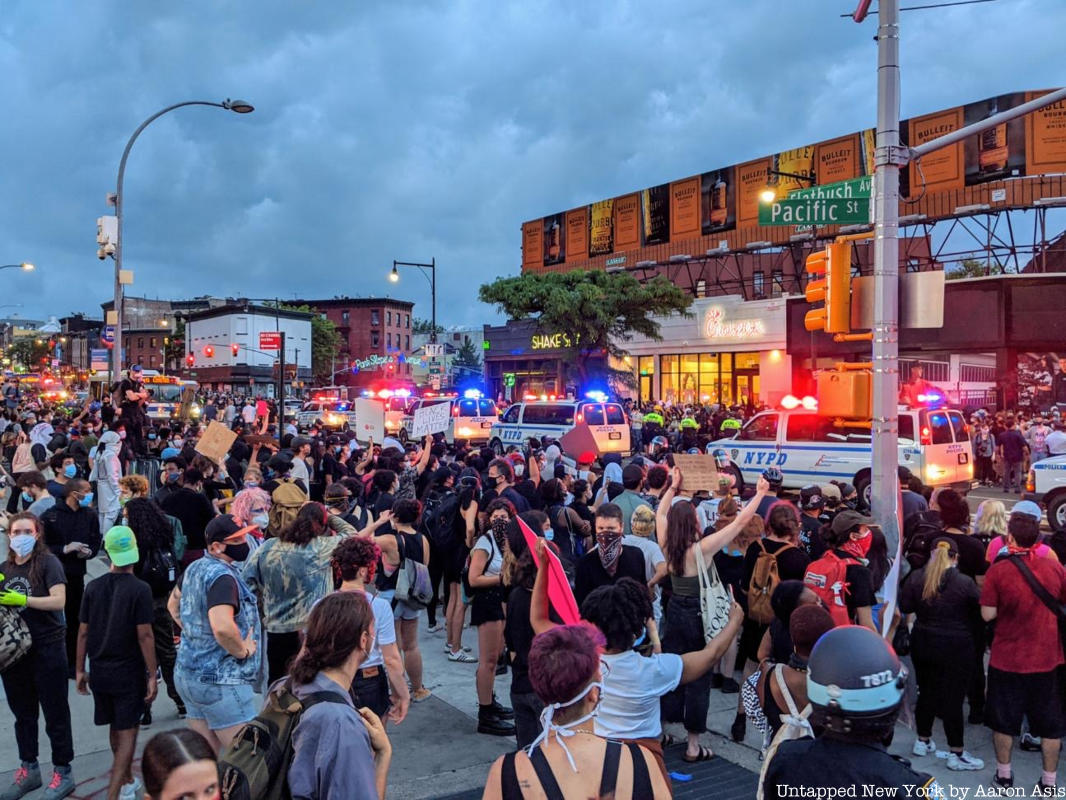
Over the weekend New York City and cities around the country have been witness to clashes between demonstrators and the police. The events were sparked by the death of George Floyd in Minneapolis, after three police officers pinned Floyd to the ground and one, Derek Chauvin, held his knee to Floyd’s neck for nearly nine minutes while Floyd calls out that he cannot breathe. You can find photographs of this weekend’s events on Untapped New York and on the social media accounts of our photographers Aaron Asis (with additional images here) and Joseph Anastasio).
As we all bear witness to what is continuing to unfold nationwide, including in the neighborhoods in Brooklyn where the Untapped New York team lives and works, we thought we could provide historical context the city’s past as a site for political expression. Going back to the colonial era, New York City has been no stranger to revolts, demonstrations, protests, and riots. Here are ten events from 1712 to the 20th century.
1. New York Slave Revolt of 1712
 Slave market marker at Wall Street and Water Street
Slave market marker at Wall Street and Water Street
One of the first revolts in New York City’s history, the New York Slave Revolt was a 1712 uprising of enslaved Africans, which killed nine whites although 70 blacks were arrested and jailed. Although there were no large plantations in the city, New York City had one of the largest slave populations in the colonies, slaves working as domestic servants and dock workers. When the colony was transferred from the Dutch to the English, many enslaved people lost many of their rights, and slaves were required to carry around passes and were prohibited from marrying or gathering in large groups.
On April 6, 1712, a group of around 20 black slaves burned down a building on Maiden Lane in the modern-day financial district where a slave market was located, and fought back against whites who were armed with guns and hatchets. However, many of the slaves were caught and returned to their owners, some put on trial and eventually executed. The revolt ultimately led to the passage of stricter slave laws in the city, such as making it illegal to carry firearms or to gamble, and acts like property damage and conspiracy to kill could be met with the death penalty. New York saw further race- and slavery-related riots in the 19th century like the 1834 New York anti-abolitionist riots.
In 2015, New York City finally acknowledged that it was once home to one of the biggest slave markets in the country. Mayor de Blasio unveiled a plaque marking the spot on Wall Street where the slave market once stood, dedicating it to the thousands of enslaved people who passed through.





